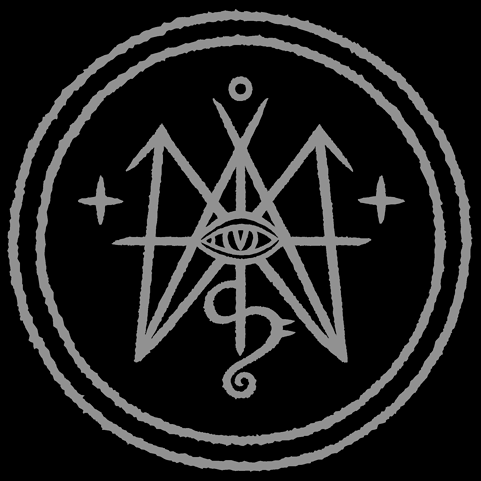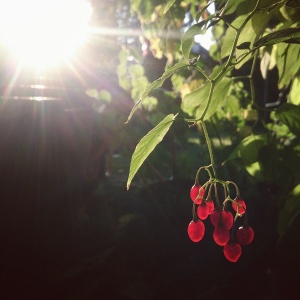Finished the first week of January, moon first quarter: the long awaited second batch of Adramelech incense is here. It is so far my most eclectic and also most tedious incense blend in the making. Deep yet aerial, fiery yet also fresh, repulsive yet also strangely attracting – an incense both for the living and the dead.
The incense includes some rare herbs and complex resins such as elemi, opoponax, guggul and galbanum. The spiritual and magical links to the deity Adramelech have been discussed before. This time I will highlight the ingredients that compose this kaleidoscope of fragrant herbs, resins and woods. This is part II. (read part I)

Adramelech Incense, January 2017
Keywords: Adramelech (name of qliphotic ruler), Samael (name of qlipha, meaning “poison of god” or “blindness of god”), Shaarimoth (name of infernal habitation, meaning “gates of death”)
Associations: mercury, cunning, eloquence, wit, seduction, trickery, disobedience to God, intoxication, oneiromancy, necromancy, knowledge about poisons
Flowers in the valley of the shadow of death…
The sweet scent of the lily of the valley (Convallaria majalis) tells of spring and the returning of life, yet the plant often adorns graves and is deadly poisonous. As yet another mercurial herb with venific properties it perfectly represents the darker aspects of the planetary influence corresponding with this qlipha. Whether it was this or another “lily of the valley”, we do not know, but legend tells that a flower by such name grew where the tears of Eve fell, when she was banished from Eden. It is also told, the serpent that tempted Eve to taste the fruit from the tree of knowledge of good and evil, was either Lilith or Samael in disguise. For disobeying god, man was sentenced to a life of labor and eventually die, only to be granted eternal life after death if… well, you know the story. In the Christian faith the lily features also as a symbol for the second coming of Christ and thus the resurrection of the dead at the day of judgment. From seduction, to sin, to the bitter truth, to the tears that followed and lastly the flower that grew from them; the lily of the valley is an essential part of this incense.
Ophidian emissary…
Shed snakeskin is added herein as an animalic link to the qlipha’s ophidian manifestations. The serpent is also a totem guarding the astral gates to the realm of the dead. I was given shed skins from a red-tailed boa (Boa constrictor) and carpet python (Morelia spilota). The owner of the snakes noted the python is quick and populates trees, whilst the boa resides in the field and is altogether a bit slower. I recommend looking up both species and reading about them. I will share here just one bit I came across and found interesting in this context. The boa features in Mesoamerican myth: it was believed the serpent was sent by the gods (which is expressed in its German name “Abgottschlange”) as an omen of impending doom. It was also believed the boa would hide in the manioc fields and impregnate unwitting women, to spawn a new serpentine breed. This is similar to the esoteric lore about the serpent Samael impregnating Eve, who then gave birth to Qayin. Shed snake skin has a fascinating, transparent, paper-like texture. It crackles when crushed and is surprisingly tear-proof. The color of these skins is a ghostly grayish white to pale golden-red and partly iridescent. When burnt it smells like burnt skin or nails, but this is covered by the aroma of the resinous and herbal ingredients.
Protector at the threshold…
Lavender (Lavandula angustifolia) is one of those herbs, that covers unpleasant odors, including the stench of decay. More conventional applications include the use of lavender oil in relaxing baths and for a calm sleep. Lavender may ease nervous tensions and help focus the mind. In magic it is also thought to aid in contacting spirits, it is used for cleansing and for helping the dead find rest. The flowers are also added to dream pillows. Personally I have found lavender to be a potent messenger between the realm of the living and the dead, especially in dream, thereby being protective of as well as guiding the dreamer. This would be a proof of its association with the planetary influence of Mercury and deities such as Hermes, and particularly Hermes chthonios. This blend contains French blue as well as intensely fragrant white lavender from our garden.
The mirror gates of death…
The daffodil aka narcissus is a bright spring flower with an intoxicating scent. In Greek myth however it features as a flower of death. Persephone was lured by the pale fragrant flowers and they would be the last thing she reached for, before Hades abducted her to the underworld. The banks of the river Styx are described as being covered with daffodils. The flower is named after the youth Narcissus, who committed suicide, after he saw his own reflection in the water. Narcissus was blessed with otherworldly beauty and adored by girls and boys. At the same time he was cursed, as he only was to live long if he would never recognize himself (“si se non noverit“). Obsessed with his own beauty and aloofness he drove one of his admirers into suicide. The young man’s death was revenged by the gods. Nemesis caused Narcissus to see his own reflection in the water and he fell in love with it. Longing for his own reflection he drowns. Instead of his corpse is found a flowering daffodil. The daffodil is hence also a symbol of seduction, unfulfilled longing and obsession with one’s ego, which is popularly known as narcissism..
Another aspect addressed in the story of Narcissus is the delusive nature of the mirror’s surface. In one version of the legend a leaf falls into the water and distorts the reflection of his image, perceived as so ugly by Narcissus that he commits suicide. The mirror here is more than a deceptive surface, it becomes a gate or a trap through which Narcissus enters death. I have mentioned the connections between this qlipha and reflective surfaces as are found in the poisonous white-silvery metal mercury, which is liquid at room temperature and extremely volatile. Early uses of mercury include the making of divinatory mirror bowls, which were found in elite Mayan tombs. Today it is employed in liquid mirror telescopes. I cannot include real mercury within this incense blend. As a simple visual substitute and eye candy I use silver-colored Frankincense.
The tears that open the heavens and hells…
Galbanum (Ferula galbaniflua) is the semi-liquid resin derived from a species of giant fennel (not to be confused with the common fennel). The resin has a bitter, green scent and is of a sticky, honey-like consistence. It is one of the ingredients used in the incense of the tabernacle (Ex. 30:34) and features in Agrippa’s spirit suffumigation. It was sacred to Ancient Egyptians, used for divination, contacting celestial spirits as well as communing with the dead. It has strong oneiric properties and is great to burn prior to sleep and dream work. I was looking for a resin complimenting the deep green scent and dark mercurial nature of this blend. Galbanum is a perfect match. Only its sticky-fluid consistence can be a little tricky: I heat it prior to use, then pour the hot liquid into the bowl with my blend and then (wearing rubber gloves) start kneading and kneading…
Elemi (Canarium luzonicum) has similar properties as galbanum but comes along more aerial and lofty, with its intense dill-like scent and fresh coniferous undertones. It also has a sticky consistence and, like galbanum, is somewhat difficult to blend with other herbs and resins. I hence store elemi in the freezer, then crush it for as long as it remains brittle and try to blend it as fast as possible with the rest. The elemi then binds with the other ingredients and forms clusters, which I then knead through, over and over. To prevent the sticky mass from gluing unto my hands I use a plant oil or alcohol, which act as a natural solvents.
This process can take hours and is one of the reasons why this blend is a little more arduous to produce then other incense I offer. But the result is worth it, for when burnt, this blend can boost your awareness and elevate your perception in a quite extraordinary way. It is rather strong and intense in its pure form and hence can be blended with other resins and basic ingredients for a more moderate effect.
Opoponax is also known as sweet myrrh and bisabol myrrh. The resin is typically orange-brown to red in color and has an intense aroma, which can actually be a little sickening. Its scent, when burnt, is sweeter, somewhat animalic and less bitter than that of myrrh. Opoponax is traditionally used to cleanse, protect against negative or parasitic influences and to improve intuition. It cleanses and strengthens a wounded aura, helps fine tuning the senses and inspires creative work. Harold Roth notes that it is especially useful against negative thoughts. The resin used in this blend comes from trees in the Commiphora genus. Opoponax is an alternative spelling for opopanax, from Anglo-Norman opopanac, from Latin opopanax, from Hellenistic Greek ὀποπάναξ, from Ancient Greek ὀπός “vegetable juice” + πάναξ “panacea” = all healing. The original source for this resin may though in fact not have been the aforementioned trees but different plants in the Apiaceae family, such as the Hercules-all-heal (Opopanax chironium). The juice obtained from this herb has an acrid bitter taste, but produces a balsamic lavender-like scent when burnt.
The earthy, sweet, balsamic aroma and strengthening properties of guggul (Commiphora mukul) compliment opoponax and other resins used in this incense. Guggul has a soft consistence and is of a dark brown to near black color but is translucent against a light source, then taking on hues of light-brown to deep blood-red or sometimes green. In Hebrew, ancient Greek and Latin sources it is also referred to as bdellium. It has been cultivated and used in Indian Ayurvedic medicine for nearly 3000 years. It is a personal favorite, as it has the best of myrrh and opoponax, both in scent as well as pertaining to its spiritual effects. It is also noted to have impact on the blood flow and circulatory system and is applied to wounds for disinfection. In India it is burnt as an incense for cleansing and banishing bad spirits from a home. It is also burnt prior to sleep, to calm the mind and relax the body. Unfortunately the Indian tree species is threatened due to over-harvesting. Alternative sources are African and Arabian Commiphora trees, which yield a less balsamic but equally potent resin.
Arboreal messengers between the realms…
There are various trees thought to guard the entrance to the underworld or the mythical gates of death, but there is one tree in particular attributed with the special power of not only connecting all the dead but being able to revive them from their graves. This guarding tree of the dead is the yew (Taxus baccata). And whilst the wood or any part of this tree is considered to be blessed with bearing the power of bringing life to the dead, it is a fact, that its dark-green, poisonous, needle-shaped leaves bring the reverse, namely death to the living. The smallest amount can kill a man. Yet shamans would use it to travel to the realm of the spirits (the dead) and return with wisdom and knowledge about curing the sick. Or the lost wanderer would fall asleep under the tree, sometimes never to return. It is fascinating how this dark, slow growing tree would bear such potent quickening powers. It is yet another example for a plant being ruled by both Mercury and Saturn.
Sandalwood (Santalum album) too bears associations with the dead, as it is burnt to please their souls. In Hinduism the dead are cremated on the wood as its scent is thought to appease their souls and help them leave. White Sandalwood is called so because of its white heartwood. It is also referred to as the “Great Receiver”, since the oil extracted from the wood absorbs the aromatic compounds of other oils and because of this is used in traditional attars. The fragrant oil is attributed purifying, relaxing, mind calming, cooling effects and is also thought to induce sensuousness and lust. Interestingly S. album is semi-parasitic, in that it derives nutrients by parasitizing the roots of other trees, however without causing the hosts greater damage. Originally spread across India it is now cultivated in other Asian countries and Australia. The Indian sandalwood is threatened due to over-exploitation and altered land use, its trade and export is regulated strictly by the Indian government. The trade of Australian sandalwood is cautioned as well. Similar scented woods exist, but are considered of lower quality. Commercially available white sandalwood is often adulterated or artificially scented. Real Indian sandalwood is rare and expensive and its trade is banned in some countries. In Germany few sellers carry it. This blend contains natural, fragrant Indian sandalwood, which is not perfumed.
Red sandalwood (Pterocarpus santalinus) is not related to the aforementioned white sandalwood. It is valued for its red color and used as a natural food dye and also as a paint pigment. It has a neutral, mildly woody scent and is used as a base material for incense sticks and cones. It is attributed cleansing properties. In traditional herbal medicine it is used among others as an antipyretic, tonic and aphrodisiac. Some employ the wood also because of its color in love and martial spellwork. It should be noted that the tree is slow growing, producing a hard red wood, which is sought after by furniture makers. Red sandalwood is listed as an endangered species because of over-exploitation for its timber in South India. Its export and trade require a CITES certificate, yet red sandalwood chips for incense making are widely available. The red sandalwood contained in this incense has an intense vermilion color.
Due to the threatened status of both red and white sandalwood I consider substituting both ingredients with hazel and rowan wood in the future.
Last but not least, one small but mighty addition, that rounds up our excursion through the garden of Adramelech-Samael, is the dust obtained from dead peacock butterflies. These adorable creatures would frequent my altars for the dead during the cold season of the year, feeding on the offerings given to the dead and their saints. Some say the butterfly or moth is a messenger of the dead, that can guide or lead astray the living. Whatever it is, I leave it up to you to find out…
For ordering write to info@teufelskunst.com
January 15, 2017
Posted In: Incense, Herbs & Seeds
Tags: necromancy, andramelech, adramelech, qliphotic incense, ritual incense, incense blends, oneirogenic, oneiromancy, qliphoth, incense, adramalik, oneiric, adramelek









